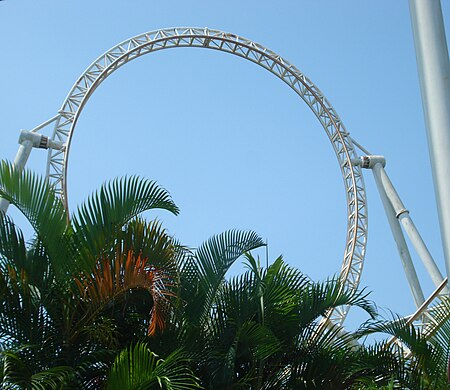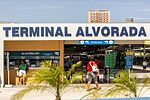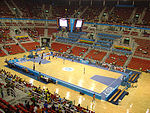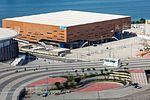Monte Makaya
Removed roller coastersRoller coasters in BrazilRoller coasters introduced in 1998Roller coasters manufactured by IntaminRoller coasters that closed in 2010 ... and 1 more
Steel roller coasters

Monte Makaya was a steel, looping roller coaster manufactured by Intamin and located at Terra Encantada in Rio de Janeiro, Brazil. When it opened in 1998, Monte Makaya's eight inversions tied the world record previously set by Dragon Khan. It was located in the Terra Africana section near the rear of Terra Encantada in the northwest corner prior to the park's closure. Its location is now in the newly relocated Mirabilandia amusement park under construction in Paulista, Pernambuco, Brazil as of 2017.
Excerpt from the Wikipedia article Monte Makaya (License: CC BY-SA 3.0, Authors, Images).Monte Makaya
Via Parque da Lagoa da Tijuca, Rio de Janeiro Barra da Tijuca
Geographical coordinates (GPS) Address Nearby Places Show on map
Geographical coordinates (GPS)
| Latitude | Longitude |
|---|---|
| N -22.985274 ° | E -43.364421 ° |
Address
Via Parque da Lagoa da Tijuca
Via Parque da Lagoa da Tijuca
22775-904 Rio de Janeiro, Barra da Tijuca
Rio de Janeiro, Brazil
Open on Google Maps










